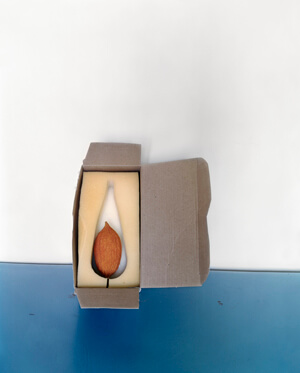Original Article Published On The Washington Jewish Week
When photographer, Anna Shteynshleyger, was a little girl growing up in Moscow in the late 1970s and early 80s, she never imagined the life that would await her in a quiet suburb of Washington, D.C. Looking back, Shteynshleyger playfully and painfully recalls her arrival to Gaithersburg in February, 1992. “It was horrible. It was a nightmare, awful, lifeless, like hell!”
At age 15, Shteynshleyger found herself in Seneca Valley High School in Germantown, unable to speak English and unable to drive. Her father had arrived in the States seven years earlier and was commuting between New York City and Arlington. He helped organize the relocation of Anna and her mother. These trying years marked an important turning point in Shteynshleyger’s personal, professional and Jewish life.
As Shteynshleyger recalls, her father was “very wise – he went to a second-hand shop and bought me a used camera, a Pentax K1000, for $100. I immediately signed up for a photography class with a teacher named Jay Corder. It was my only way to connect with the world.” Shteynshleyger continues, “I remember selling my first print to my ESOL (English for Speakers of Other Languages) teacher Mrs. Hildebrandt for $5! And I had a small exhibition at the JCC on Montrose Road.” Shteynshleyger’s camera and the local branch of the Gaithersburg Library helped Anna overcome what she describes as “isolation, loneliness and disconnection.”
“In the library, I chanced on books about Judaism. My first observance of Jewish tradition was through these books. I learned the Sh’ma and candle blessings from books!” Her journey into the arts and Judaism continued when Shteynshleyger attended the Maryland Institute College of Arts in Baltimore. She wondered, “How do I get a hold of Jews in this town?” Her prayers were answered when she met the Katz family – Rabbi Joseph Katz and his wife, Masha. She spent each Shabbat in their home in Baltimore.
Shteynshleyger then enrolled in the master of fine arts program in the photography department at the Yale University School of Art. After completing her MFA in 2001, she and her then husband moved to Des Plaines, Ill., to what she described as a small, suburban Chabad community. Anna spent four years living in this tight-knit religious community. During that time, she photographed family, friends and herself.
Her photographs from the Des Plaines years are currently featured as part of Perspectives, 2012, at the International Center for Photography (ICP) in Manhattan. Her exhibition, entitled City of Destiny, is named after the motto of Des Plaines.
The other two artists chosen for the ICP exhibit are Chien-Chi Chang and Greg Girard. Chang’s photos depict Chinese immigrants in America and feature photos of those living in the States and those still living in China; Girard looks at the lives of American service personnel and their families on bases in the Far East. According to curator Christopher Phillips, “in different ways, each poses the questions of what is home, where is home, and what happens when members of a tight-knit cultural community are transported to unfamiliar locales?”
Phillips is clearly taken by Shteynshleyger’s work and her personal story. When he first met the artist, she simply presented her photos and remained silent. “After a long silence, she said, ‘What do you think?’ “ Phillips explains Shteynshleyger’s belief that “the artwork should be strong and compelling enough that the artist doesn’t need to tell what it is.” By the third meeting, notes Phillips, “Anna began telling me about her life!” Phillips describes a “deep tension – artistic and spiritual longing – that attracted me to her. It is a central tension that drives her work.”
One photo in the ICP exhibit, Covered, 2008, is from the collection of New York City residents Mitchell and Lauren Presser. The viewer sees a person’s back. The person in the photo has short brown hair and what looks like a beard. Upon closer examination, it is a woman – wearing two wigs. “Anna’s work offers an almost voyeuristic inside view of her small tight-knit community of family and friends. It also provides great insight into her personal struggles and development. … Without a single word, Anna captures an inner struggle with both religion and art,” notes Mitchell Presser.
Another photo featured in City of Destiny, “Portrait With Mordecai,” depicts an unhappy-looking couple. We later find out that the pregnant woman in the photo is the artist herself. Presser offers, “The portrait of her with Mordecai, her ex-husband, is a narrative of her life through a single moment in time, without a single word of explanation. City of Destiny is a portal into Anna’s challenges and development. It tells a very personal story.” Shteynshleyger’s work has been getting a great deal of attention these past few years. A solo exhibition of her work was held at the Museum of Contemporary Art in Chicago in 2004, and in 2010, her work was displayed at the Renaissance Society at the University of Chicago.
Shteynshleyger is currently a divorced mother of two. She lives in Chicago and is an assistant professor in the photography department of the School of the Art Institute of Chicago. She is currently working on photographs that explore the ideas of violence.
And how does Washington, D.C., look to the artist now? Shteynshleyger has brought her children back to the D.C. area. “My parents still live in Vienna, and we visit every summer. They have come to see the usual tourist sites. They don’t seem to suffer from my burdens of memory.”
For Anna, however, “Going back through D.C. reminds me of how desolate and isolated one can feel in the world.” City of Destiny will be on display at the ICP in Manhattan through May 6.








